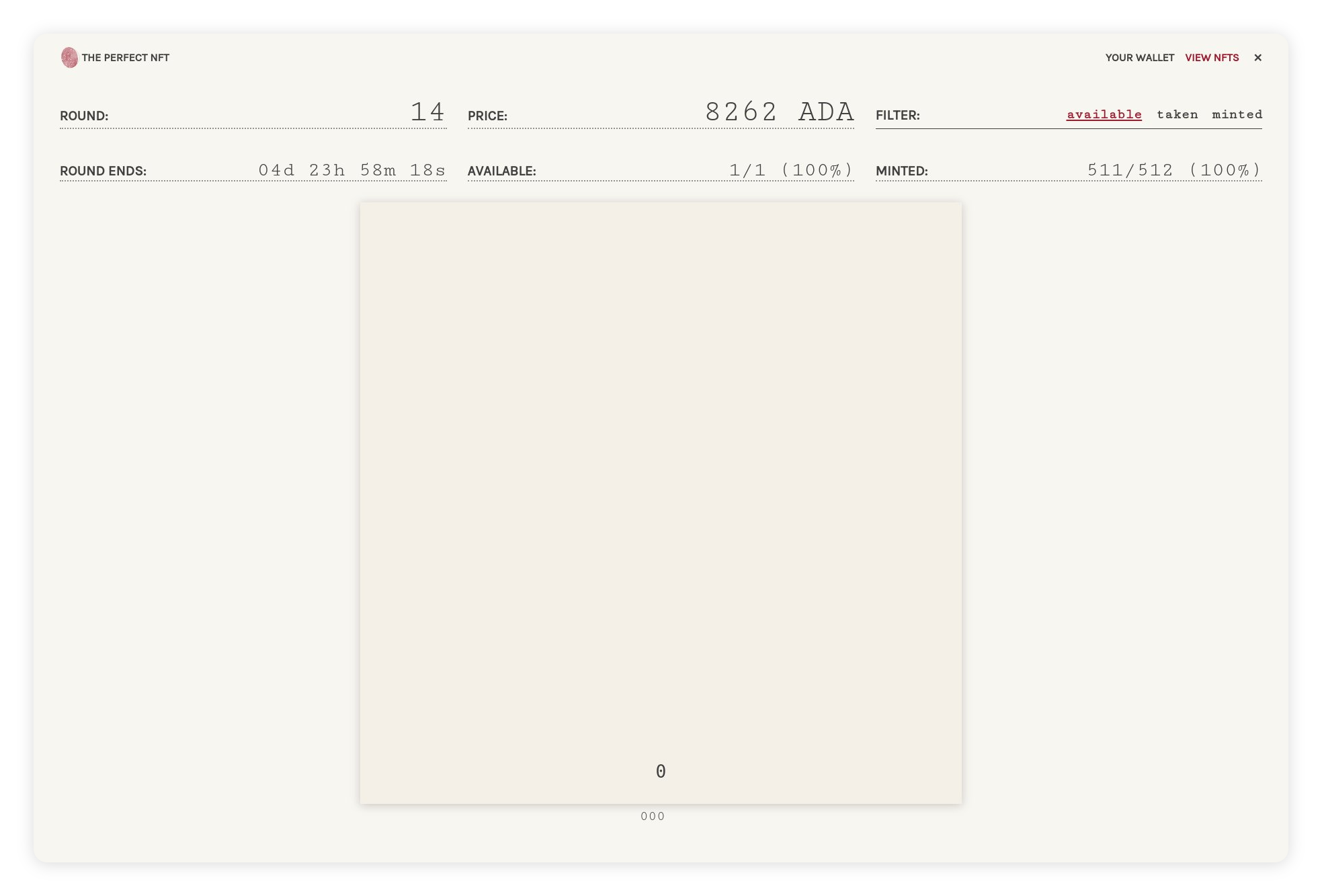The Perfect NFT
A blockchain art performance shaped by its collectors, for its collectors. It's a critique on the absurdity of the NFT space, where rarity is often valued more than the artwork.

Shaped by participants
At the start, there are 512 untouched pieces. Each piece's composition is derived from its respective number between 0 and 511 as a binary value.
For instance, the number 456 translates to the binary value 111001000. Where there's a 1 in the binary value, an empty circle is placed on the canvas following a grid, making every piece unique.
The buyer's fingerprint is placed in an unfilled circle on the canvas with every round of the sale. If there are no empty spaces, the fingerprint of the oldest buyer is removed to make space for the new one.
Fingerprints are generated from the buyer's wallet address using a generative algorithm. The distribution of fingerprint types is defined by real-world statistics, making some fingerprint types more common than others.

Watanabe auction
The sale happens in sequential rounds. The starting price for all 512 NFTs is 8 ADA. With every round, the price is increased by the percentage of NFTs sold in the previous round. So if in round 1, all NFTs are sold, the price for round 2 will be 16 ADA. If in round 2, only 50% of the NFTs are sold, the price for round 3 will be 24 ADA.
If an NFT is bought in a round, the previous owner receives a Temporal Bidding Declaration as proof of participation. They will also get 90% of the proceeds from the sale, with the other 10% going to the artists. For example, if they bought the NFT for 8 ADA and sold it for 16 ADA, they would receive 14.4 ADA with 1.6 ADA in royalties paid to the artists.
Every round stays open for five days or until all NFTs in the round are sold. Whichever comes first. If an NFT is not bought in a round, it will be minted and sent to the last owner's wallet. After minting, it will no longer be available in the next round. The project ends when all NFTs have been minted.
The mint unfolded very predictably, almost like a self-fulfilling prophecy, except that no predictions were communicated beforehand. The rarest piece, number 0, a blank square without a fingerprint, was the last one sold at the highest price of 8262 ADA, roughly €2750.

Like DendroRithms, the project is wholly stored on the blockchain. The Temporal Bidding Declarations, the NFTs, and the source code to generate everything, including fonts. Unlike almost all NFTs out there, they are not “links to JPGs” but articles for constructing themself.
This project was done in collaboration with Alexander Watanabe.
More info on theperfectnft.art.





